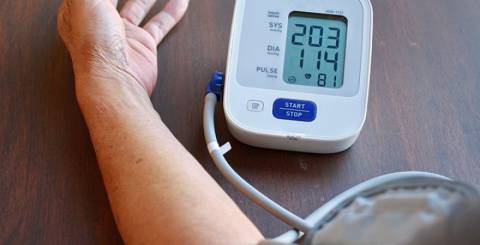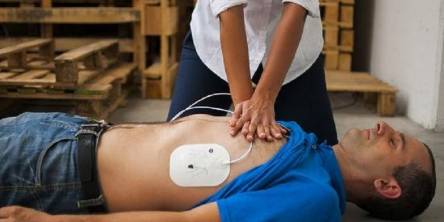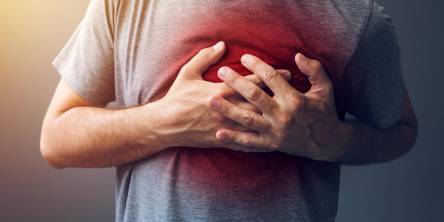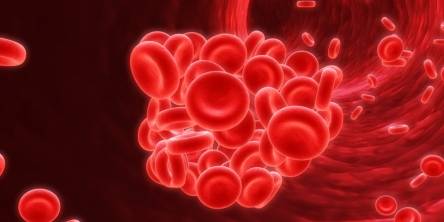How To Know When High Blood Pressure Is An Emergency

It can be difficult to know when you have high blood pressure because the symptoms and signs are not always obvious. If left unchecked, however, it can gradually damage your blood vessels, heart, kidneys, and other vital body organs. Blood pressure fluctuations can also be dangerous.
Blood pressure is the force of blood pushing against the artery walls as the heart beats. It is measured with a blood pressure cuff that is wrapped around your arm and gradually tightens before releasing. The outcomes are represented by two numbers. A blood pressure reading is calculated by multiplying the systolic blood pressure (first number) by the diastolic blood pressure (second number). These two numbers are used to categorize blood pressure levels.
In this article, we will discuss how to manage high blood pressure, how to recognize when high blood pressure is an emergency, and what to do in the event of a high blood pressure emergency.
Common causes of extremely high blood pressure
Lifestyle choices
Obesity, a high-fat diet, excessive smoking and alcohol consumption, and certain medications can all increase the risk of hypertension.
Genetics
Genetic predisposition is a major cause of hypertension. Adults with a family history of high blood pressure or diabetes, kidney disease, lupus, hyper or hypothyroidism, and obstructive sleep apnea are more likely to develop hypertension.
Special situations
Pregnancy can cause high blood pressure. Children with high blood pressure must take special precautions.
When is high blood pressure an emergency (hypertensive crisis)?
When blood pressure readings exceed 180/120mm Hg, doctors consider it an emergency. You might suffer from fatigue, nausea, vomiting, confusion, anxiety, chest pain, and muscle tremors while in this state.
You may also experience chest pain, confusion, and possibly a stroke. However, this is a rare event that occurs when a patient fails to take their medication as prescribed by their blood pressure specialist.
What is a hypertensive crisis?
A hypertensive crisis occurs when your blood pressure suddenly and dramatically rises. However, this is an extremely rare occurrence, and while some people will experience severe symptoms, others will not.
A hypertensive crisis occurs when blood pressure rises to 180/120mm Hg or higher. Symptoms may include shortness of breath, chest pain, vision changes, back pain, numbness, and difficulty speaking.
Fatigue, nausea, vomiting, confusion, anxiety, chest pain, and muscle tremors are also possible. It can result in chest pain, confusion, and even a stroke. This situation necessitates immediate medical attention, so call 911 if you notice any of these symptoms.
A hypertensive urgency, on the other hand, occurs when your blood pressure is 180/120mm Hg or higher but does not cause severe organ damage. This is a less serious situation because you can lower your blood pressure quickly with the proper medication.
Treatment for hypertensive crisis
To treat a hypertensive crisis, most doctors will prescribe an intravenous (injectable) medication, which enters the bloodstream directly and produces faster results. Blood pressure should be gradually reduced to avoid other complications such as fatigue, heart rhythm problems, fainting, and respiratory distress.
Within the first one to two hours, the goal is to reduce blood pressure by about 25%5. Once you have achieved stability, the doctor will start you on oral antihypertensive medications.
The medications prescribed vary depending on several factors:
- Pregnancy
- An underlying medical condition
- The cause of hypertensive crisis
Complications of a hypertensive crisis
If you do not treat extremely high blood pressure for an extended time, the risk of serious consequences such as heart attack and stroke increases. A hypersensitive crisis can also cause memory loss, eye damage, kidney damage, and unconsciousness. Furthermore, the main artery leading from your heart may tear, resulting in fluid deposition in your lungs.
Similar Articles
So you’re halfway up the stairs, just a few more steps to go, and suddenly, you feel like you’ve just run a marathon. Your heart’s racing, your lungs are working overtime, and you’re left wondering if you’re that out of shape—or if there’s something more sinister going on. Don’t worry, you’re not alone
Heart disease claims the lives of 9 million people every year. There are lots of small habits and lifestyle choices that can have a negative impact on the health of our hearts, especially when they are amplified over the course of a lifetime
A reliable AED plays a vital role in increasing the survival rate of SCA. This post lists 8 reasons to tell why we need a reliable AED device and something you need to know about the AED.
Normal heart rate in people is 60-100 beats per minute. But if the heart rate is lower than 60 beats per minute, that may indicate bradycardia development. If the pulse is constantly 30-40 beats per minute and it doesn’t increase even during physical activity, it’s a quite dangerous condition.
In recent decades, Western medicine has shifted its main focus quite dramatically, from infectious diseases towards cancer and chronic conditions, such as heart, stomach and liver issues.
According to statistics, people suffering from diabetes are 1.5 times more likely to develop a stroke than those who don’t have this disease. So why does it happen? The connection between these two conditions lies in the way the body transforms glucose into energy.
Black, green, white or red teas come from the same plant Camellia Sinensis. The difference lies in the processing method: Green tea is made from the buds and top two leaves of a shrub, which are then quickly steamed to prevent fermentation
Blood clotting is a necessary process that in certain instances prevent the body from losing too much blood. When you get a paper cut or a minor injury, a blood clot stops the bleeding and falls apart.








